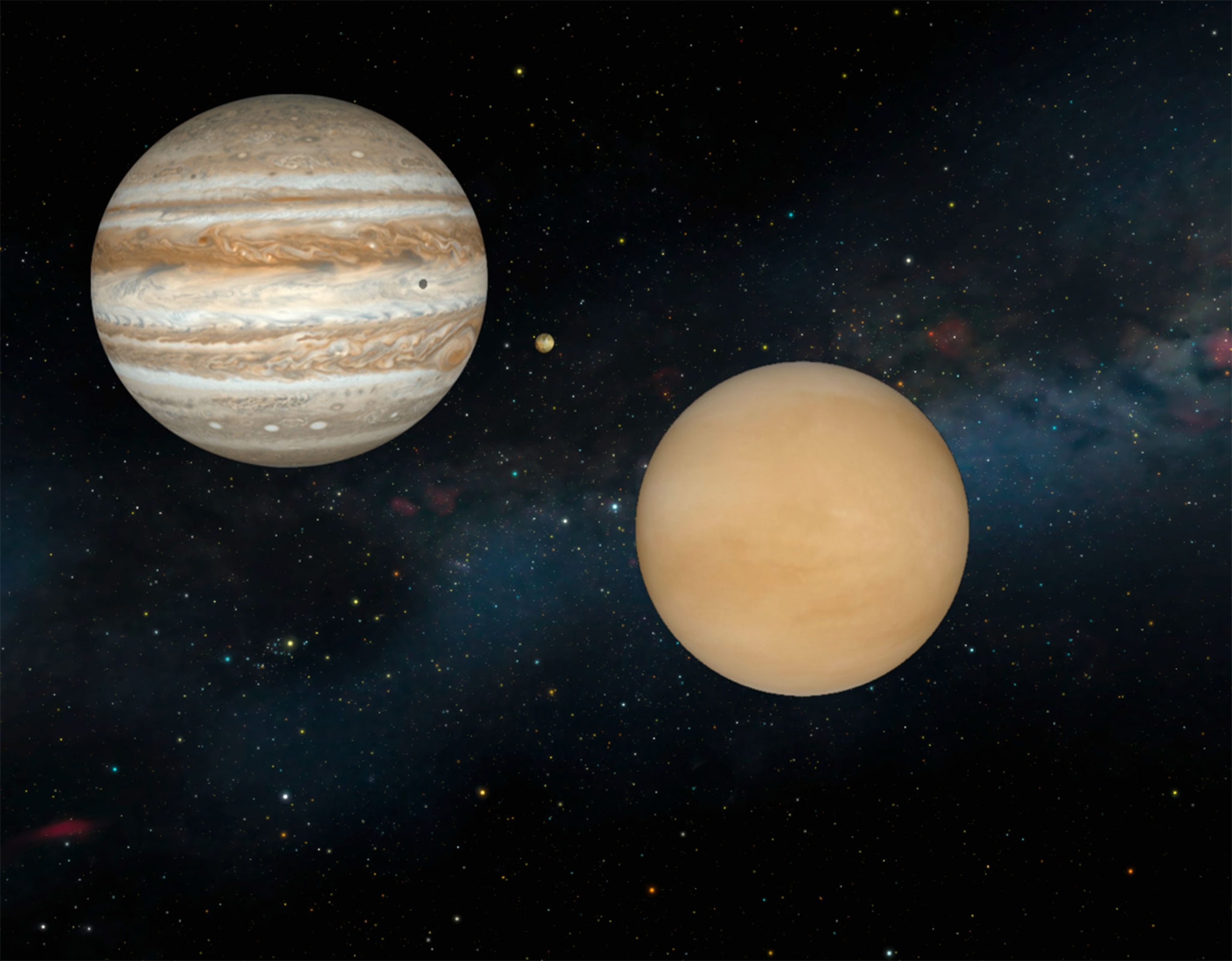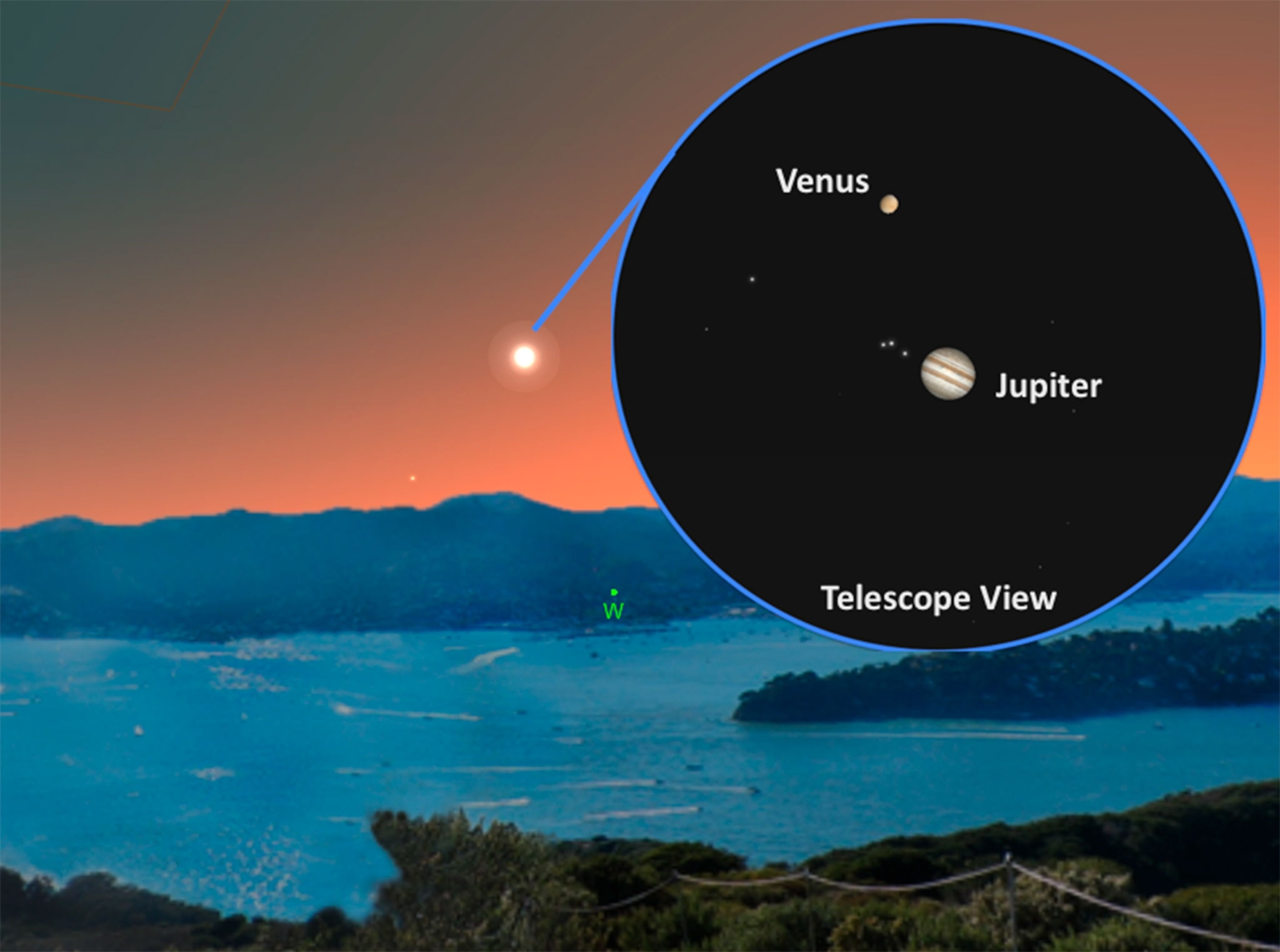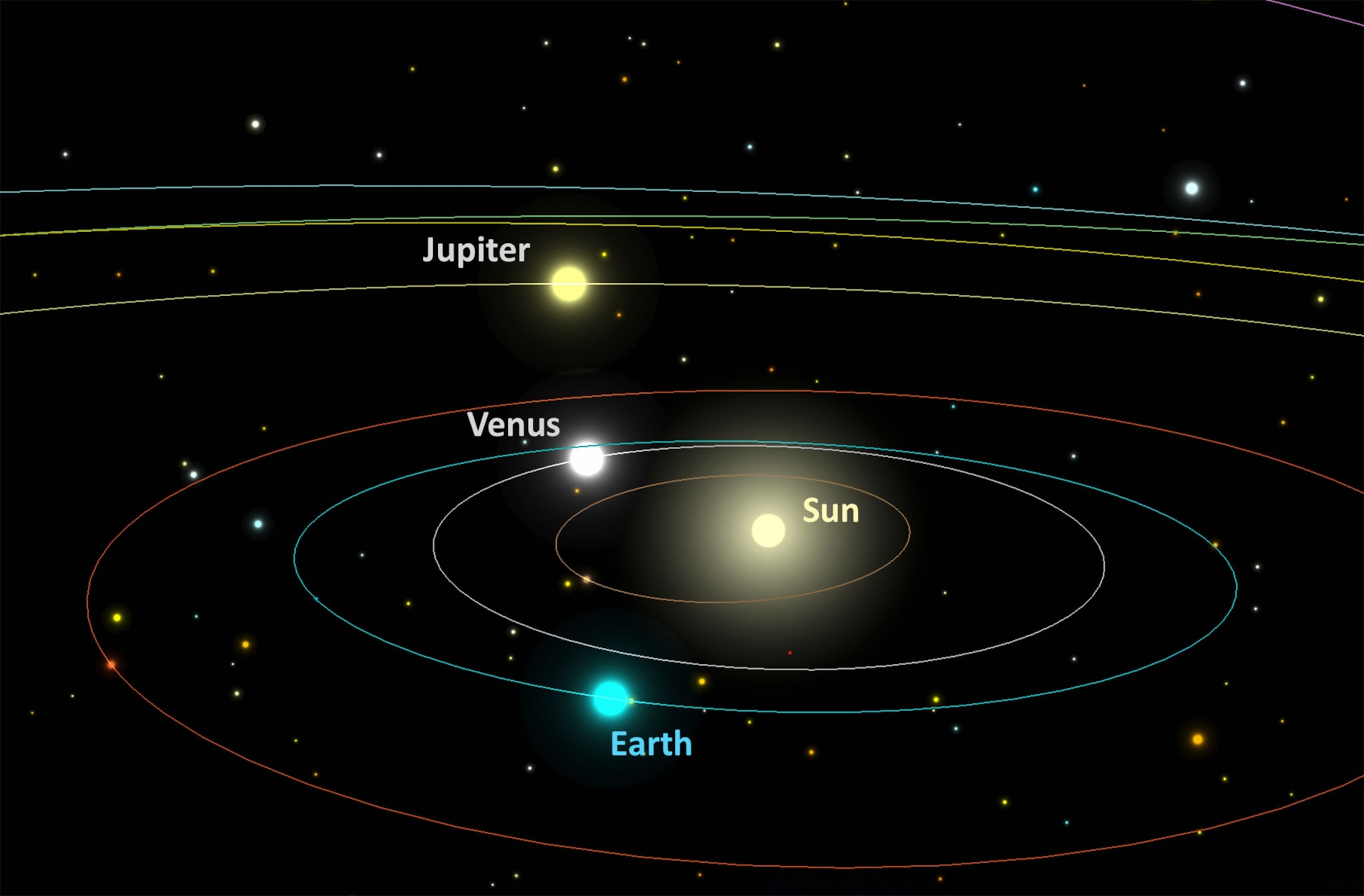
How to See a Rare Planetary Close Encounter
Your guide to watching Venus and Jupiter almost touch in the evening sky.
Skywatchers are getting an amazing sky show this weekend as two of the brightest planets visible from Earth will appear to nearly merge. Anyone with clear skies can catch this spectacular close encounter between Venus and Jupiter after local sunset on Saturday, August 27.
When two or more worlds appear to huddle together in the sky, astronomers call it a conjunction. While this happens fairly frequently in our night skies with faint objects, in this instance we have planets visible to the unaided eyes. Both Venus and Jupiter have been dominating the sunset skies for many weeks now and have been appearing to slowly converge from night to night.
That’s because of their relative positions in their orbits around the sun and their appearance to us here on Earth.
While they may look close together, their apparent proximity is an optical illusion—in reality, Venus is a whopping 660 million km (410 million miles) away from Jupiter.
This type of celestial event has captured attention throughout history. In fact, just such a conjunction between these same two planets may have been what ancient astronomers called the Star of Bethlehem.
What should we look for?
What’s so great about this event for the novice skywatcher is that both planets can be tracked without any optical aids. But if you have binoculars or a small telescope, you can start finding the duo in the glare of dusk.
Both planets will appear very low in the western sky, a bit to the left of where you would see the sun go down.

Venus will appear as the brighter of the two, and will pop into view about 20 to 30 minutes after sunset. Earth's twin will act as a convenient guidepost to finding fainter Jupiter just to its lower right on Saturday evening. If you have a hazy sky then binoculars will help spot both targets.
On August 27, the two worlds will appear to be closest together—only 0.1 degrees apart. That’s so close that you can cover both planets easily with just your pinky finger and will, in fact, be needing binoculars to separate them. Otherwise, to unaided eyes, the planets will easily merge into one. For reference, the full moon is about 0.5 degrees wide in the sky.
What will binoculars and telescopes show us?
Even the smallest of backyard telescopes will showcase both planets simultaneously and reveal Venus’ disk that resembles a miniature version of a gibbous moon. High magnification will reveal Jupiter’s dark cloud belts and four of its largest moons sitting beside the planet like a row of ducks.
However if all you have are binoculars —hold them steady—and see if you can at least spot Jupiter’s biggest moons.
When are the best viewing times?
The best time to see the cosmic duo is between a half hour to an hour after local sunset. Timing is super critical because the planets are so close to the horizon and will quickly follow the sun, about an hour after sunset below the horizon.

No matter your geographical location, it will be important to find an observing spot with a clear line of sight to the low western horizon. The most challenging part of this sky spectacle will be that the planets will be only about 5 degrees above the local horizon—equal to about the width of your three middle fingers held at arm’s length. This means that you must find an observing location with a view of the western horizon devoid of any obstructions.
And if that isn’t enough of a sky spectacle, also look for the brilliant planets, Mars and Saturn joined by the bright orange star Antares in the southwest evening skies.
What if I miss this one?
This one is the third and last in a series of encounters taking place between Venus and Jupiter in just over a course of two years. The cosmic duo were a bit tighter on August 18, 2014.
While Venus-Jupiter encounters are not all that rare, this promises to be the best conjunction between these worlds for decades to come, and if you miss this one, then you will have to wait until the year 2065 for such a close encounter again.
Clear skies!
Andrew Fazekas, the Night Sky Guy, is the author of Star Trek: The Official Guide to Our Universe. Follow him on Twitter, Facebook, and his website.





